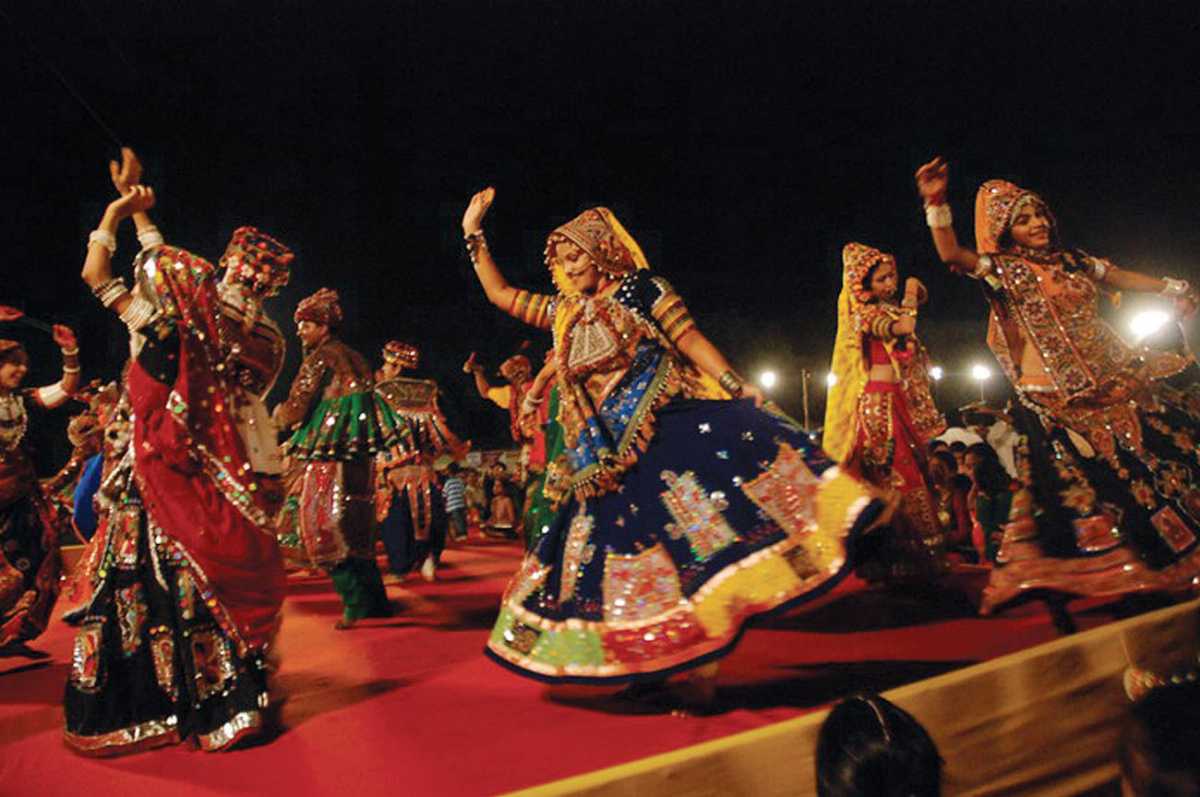Gujarati Culture, Dress and Food - The Heart and Soul of Gujarat
The diverse and vibrant state of GUJARAT has a significant contribution to the cultural aspect of India. The sheer simplicity and amiability of Gujaratis have made them a flourishing community. The state of Gujarat boasts a vibrant art, architecture, culture, and heritage; all of which is quite evident in the day-to-day lives of the locals. The diversity exhibited by Gujarat is a result of the various ethnic groups constituting Gujarat’s population; including Indic and Dravidian groups. The different aspects depicting the wealthy culture of Gujarat are
1. Art and Culture of Gujarat
The vast array of handcrafted products displaying intricate Gujarati art forms are not only popular in our country, but are a well-known entity all across the globe. These products include furniture, jewellery, embroidered garments, leatherwork, metalwork, baked clay articles and mirror work. Gujarat serves as the producer of some of the most creative and elegant furnishings that include bedcovers, quilts, cushion covers and table mats. Preserving the glorious legacy of its past, the garment industry of Gujarat provides a broad range of items to the buyers, namely salwar, kurtas, cholis, ghaghras, odhnis, skirts, and jackets. Intricate dainty patterns are woven on the patola sarees with high precision. The traditional art forms of the state play a significant role in preserving its rich heritage. Some other aspects of art include music, dance, and literature.

Music
The folk music of Gujarat is known as Sugam Sangeet and has acclaimed world-wide fame. The range of musical instruments utilized in Gujarati folk music includes turi, manjira, ektaro, jantar, zanz pot drum, prabhati, dhol and ravan hattho. Bhajans are also incorporated in their folk songs. Bardic tradition is another major type of folk Gujarati music.
Dance Forms
Since Gujarati people are quite enthusiastic and amiable, they have many traditional forms of dance. The four major forms of dance are Dandiya Raas, Garba, Padhar, and Garbi. Dandiya Raas is performed by both men and women and utilizes movement of bamboo sticks, known as Dandiyas. It has ancient roots and was believed to be played by the beloved Gopis of Lord Krishna. Garba is usually performed by the females in a circular formation. It is performed with reverence of the feminine form of the divinity. Garbi is traditionally performed by only the men and incorporates the use of instruments like dhol and manjiras. Padhar is mainly performed by the rural communities near Nal Lake.

2. Customs and Traditions of Gujarat
3. Languages and Religions
Although Gujarati is the mother tongue of the natives of Gujarat, many other languages are widely spoken throughout the state. Gujarati is an Indo-Aryan language derived from Sanskrit and is the 26th most widely used language in the world. Gujarati has about 11 different dialects, spoken in various parts of the state. Since the state of Gujarat shares its border with Maharashtra, Madhya Pradesh and Rajasthan; a small section of its population speak the native languages of the neighbouring states, namely Marwari, Marathi, Hindi along with Urdu and Sindhi. The natives of Kutch-a semi-arid region in Gujarat-speaks Kachchi language, which is quite an important language of the area.
4. Fairs and Festivals
The fairs and festivals of Gujarat showcase the real vibrancy and colours of its diverse culture. Thousands of people flock to Gujarat to witness the extravaganza during festivals like Navratri Mahotsav, Deepawali, Rathyatra and Kite festival. There are some fairs as well that are organized in the state every year, namely- Shamlaji Melo, Bhadra Purnima Fair, and Mahadev Fair. These occasions lure visitors from all across the globe and increase the tourist footfall. The Rann Utsav is a major festival and witnesses an exquisite carnival of music, dance and natural beauty.

5. Food of Gujarat
A traditional and authentic Gujarati meal consists of dal, roti, rice, vegetables, salad, chaas, farsan followed by a sweet dish. Gujarati cuisine is quite similar to that of Maharashtra, and most of the Gujaratis are vegetarian. Some of the famous Gujarati delicacies include dhokla, fafda, khandvi, dhal Dhokli, Undhiyu, handvo, Ganthia, dal Wada, khakhra, and Thepla. In Gujarati dishes, the flavors are a blend of sweet, spicy and sour tastes. Each region of the state has a distinctive flavor associated with its local food. A typical Gujarati dinner includes bhakri-shak or khichdi-kadhi. The Gujaratis are noted for their sweet tongue, and hence every meal is followed by a sweet dish or sometimes even jaggery.

6. Cultural Dresses of Gujarat
Patola Silk or popularly known as ‘Queen of all silks’ forms a major part of traditional Gujarati attire. Gujarati brides are adorned with silk and zari woven sarees of Gharchola and Panetar. The traditional attires often incorporate tie-dye or traditional block prints. The region of Kutch has a distinctive traditional outfit adorned by women known as Abhas. Chania Cholis are a popular choice of outfit during the festive season of Navratri Mahotsav. Men also wear unique attire known as Kediya dress during the Navratri season. Also, a prevalent Gujarati trend is the silver Pachchikam jewellery that originated in Kutch.

7. Gujarati Engagement and Wedding Ceremony
Just like other elements of the Gujarati culture, their wedding ceremony is as elaborate and exciting. With multitudes of ceremonies each with its own significance, sometimes the bride and groom await the marriage ceremony more than the marriage itself.
Engagement Ceremony
Wedding Ceremony
The wedding ceremony in the Gujarati culture is probably the most awaited event for the couple and its family but for all the guests as well. Like every Indian wedding, the rituals go back to the Vedic times, and the ceremonies kick off with the (Varghodo) wedding procession, that goes from the groom’s house to the bride’s house where the ceremonies take place. On arrival, the groom is welcomed by the bride’s family (Swagatam) after which the bride’s father performs a ritual involves him handing over his daughter to the groom (Kanya Daan) in front of the guest. After this, the rituals (GaneshPuja) commences, this is known as the Vivaan.
During the Vivaan, the couple performs the Mangal Phera where they go around the sacred fire and go through the most important part of the ritual, the Saptapadi or the seven sacred steps. The religious part of the ceremony comes to a close with the holy thread (Mangalsutra) being tied around the neck of the bride by the groom and he places the red dot (tika) on the wife’s forehead, as a declaration of her new married status (Suhaag). The ceremony comes to a close when the couple goes to the groom’s parents who will bless the couple (Aashirvaad).


